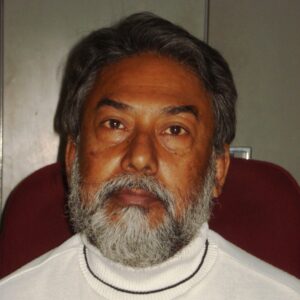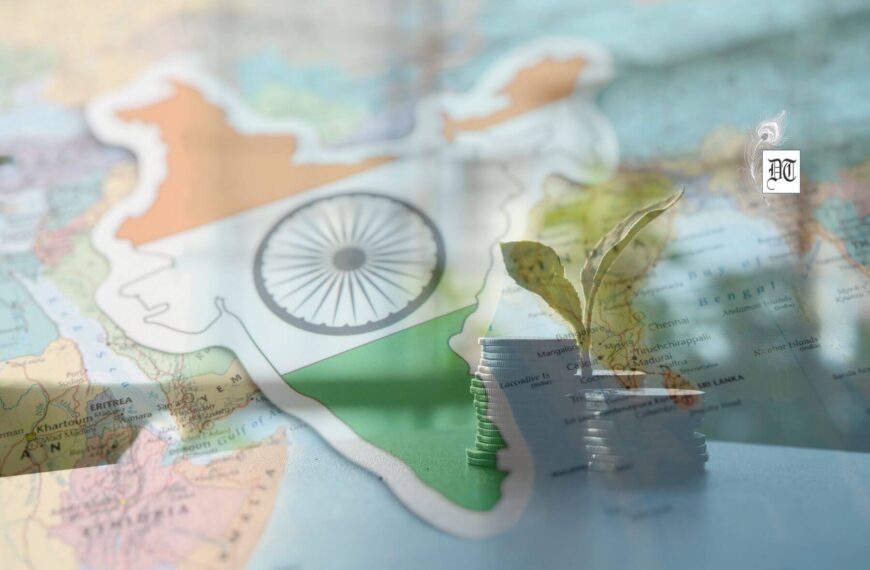It is difficult to point out what are the central problems of the Indian economy. How does one find out the central problems in such a diverse society, asks Prof. Bhaskar? He next turns his gaze at migration and abject poverty despite tall claims by MNREGA. His interview with a 10-year-old girl, who looked after her aged grandfather, while her parents and other siblings were away at the brick kiln, is an eye-opener. Last but not the least, he tries to understand rituals and economic solutions, in the regular column, exclusively in Different Truths.
Four decades back, I started teaching Economics at the UG level in Calcutta/Kolkata and my initial hours used to be devoted to explaining the central problems each economy experiences on its trajectory for development. I used to explain around what products to be produced, how the resources would be allocated and how the final output would be shared among the economic agents. Students used to ask questions related to poverty-inequality-unemployment. My non-convincing response would have been to show the latter as the consequence of material production. Now, after four decades, I developed a high propensity to re-visit what I did, as most of the insane professors do. My specialty is that relocated myself after around two decades of teaching in Calcutta at different levels and layers to Allahabad and for a brief period to Patna, thus, covering directly three major states and the students-teachers’ relations in the institutions and universities in West Bengal, Bihar, and UP.
What I realise now is the absence of any such common central problem as I narrated. The problems evolve; the problems are created depending on the political necessity, prioritised depending on the political outcome and so on. Ultimately, it is the power that determines and defines what central problems are. These could be around insecurity of women in the public domain for unwelcome dress as alleged, or it could be honour killing, riot-rape, this could be aggressive vegetarianism, or determining product mix by caste division of labour and gender division of labour, this could be producing nothing but rent-seeking and so on. On the positive side, this could be building roads for easy movement as I observed recently in Bihar, not for military movement to control the Maoists. On the other side, this could be the state beneficiary determined circulation of flood and drought every year, be it Bihar or elsewhere in India. Disaster management (sic) is a necessary corollary. In parallel, suicides of farmers in Maharashtra or elsewhere could be other central problems. The central problems could center on aggressive nationalism (or its absence, sedition) – a Bharat Mata-and-cow! The central problems could be how culture conditions material living of people.
My understanding now is there is no common central problem for some of the population are defined or (mis)guided by some others. Some live in the 21st century as some have not come out from the Ramayana era (prefer Rama to Krishna on an anti-Romeo drive). Some children are in schools and some are on wasteland. Some workers are non-working earning regular hefty salary, while some toil hard to earn hardly. Cross-sectional poverty to be understood by absolute deprivation remains inter-generational and that seems to be well orchestrated by the ruling elite. After all, dispossession is a necessary condition for accumulation, apart from direct loot and plunder. Corruption at the high place is not a problem, it is like the fishes that live in water and one does not know how much water it drank!
So, what are the central problems for India? I wait for your responses.
Of Migration, Poverty, and MNREGA
I am just back from different districts and villages in Bihar and yet to visit more than half of India (read Bharat) for a first-hand understanding why do people migrate in distress in spite of MNREGA being implemented. It was a narrative from an unknown village in the district of Nawada – known as the poverty belt. We found many of the houses locked in that village – and in one, we found a little girl of around ten-year-old, looking after her aged grandmother. I had no option but to talk to the little girl and came to know the following. Her parents left for UP. They work in an unknown brick kiln for around seven months taking her younger brothers and sisters with them, one is in the lap of her mother. Her grandmother was immobile and also would not help her parents to be carried to the long distance brick kiln for Bhatta Majduri (daily wage earnings in a kiln). This little girl cannot go to school – her eyes were in tears for her perpetual incapacity to go to school for food and education. So was the condition of her younger brothers and sisters – her parents go for the wages in the Bhatta (kiln) was in piece rate and earning by both husband and wife would fetch some more cash. She could not tell if they had any account in the bank. But told that money was spent on curative health care, rituals and repaying debt. She could not tell what the outstanding loan was.
What is the moral of the story? One, the girl will remain outside a school and remain illiterate. Two, her parents will be inter-kiln circulation over decades. The family will live in inter-generational poverty. Dispossession by loan repayment will show growth of the rent-seekers. Please don’t read this story as specific to Nawada or Bihar. Around 35 years back, I had been in Nawada to draw labourers for a brick iln of my friend in Calcutta/Kolkata. I find history repeating!
Rituals or Economics: Practising Inverted Marxism
Every boy in his early twenties in Kolkata, during late 1960s to late 1980s, either used to write poetry around love or revolution or got engaged in activities dreaming of the socialist revolution in the Marxist tradition. Over time, both the sides (the state and the non-state actors) learned – technological revolution gave the state in feudal tradition an upper hand in monopolising coercive power through technology – guns and also the physical infrastructure and social safety nets to obstruct socialist revolution.
My purpose here is not to decompose the whole history into possibilities or impossibilities of the socialist revolution but spell out my understanding that Bharat is far away from any sort of socialist revolution if that is the agenda of the revolutionaries or of the intellectual class. Let me tell you why.
In my M.Phil. class, in Development Economics, in the reputed social science research institute – and I happen to enjoy so far the monopoly power in this paper – I used to ask the grown-up students, who have an inescapable habit not to exit the class during contact hours, ‘If tomorrow you have the ritual to take a dip in the Ganga or attend my class, what would you do?’ The unhesitant response was to take a dip in the Ganga. I did not feel undermined – how could my lecture be purer than the water of the Ganga?
Now, I am back from Bihar visits for around 12 days at a stretch for my social science research purposes. I found same Bharat engaged in compelling rituals and endangering life for performing rituals. Money-incapacitated, they prefer rituals to be performed rather than finding economic ways and means to get engaged. However, I observed local markets functioning well for those rituals. It was macro ritual – Chhatt. It could have been micro (household) ritual also.
My central point is, the people in Bharat practice inverted Marx – rituals determine material conditions of life. I have reasons to believe that this will continue, in spite of the imposition of European state on Bharat to become India.
©Prof. Bhaskar Majumder
Photos from the internet.
#RandomJotting #IndianEconomy #BiharEconomy #JharkhandEconomy #Economy #Money #Polulation #DiffrentTruths







 By
By

 By
By